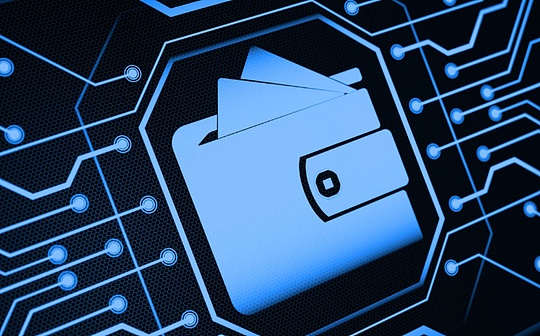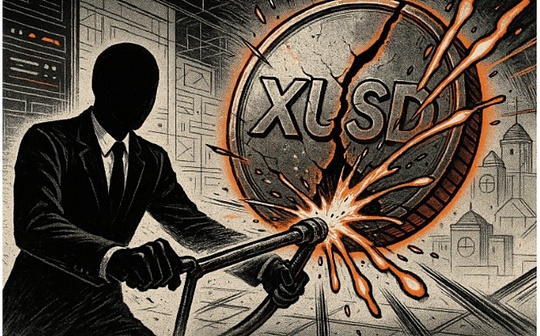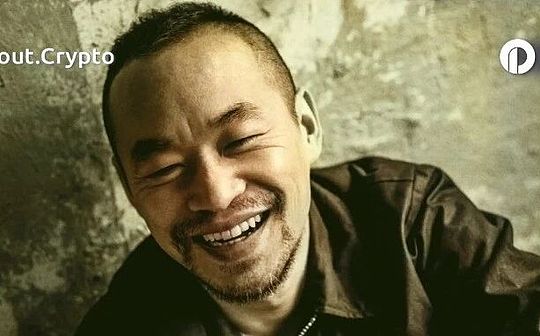
Author: Paul Timofeev Source: Shoal Research Translation: Shan Ouba, Bitchain Vision
The decentralized application refers to the original production and services of the blockchain, which has existed since the birth of smart contracts and Ethereum.However, the growth rate of users with blockchain -based products and services is significantly slow, especially compared to Web2 applications and services.Considering NETFLIX’s success, they surpassed the Blockbuster by using physical DVD leasing to the digital service and streaming world, using excellent convenience and selectivity.Touching with smartphones can control the convenience of the world, leading to the use of mobile applications, which has changed the way people interact with the Internet and greatly benefit the social network.ChatGPT surpasses Instagram and Tiktok to become the fastest growing application. It uses natural language processing (NLP) to simplify the chat robot user experience, providing a simple and powerful method of using artificial intelligence for almost anyone.
What these breakthrough products and services and their success in common are that they provide a better user experience than any existing enterprise or competitors.In order to achieve similar success in decentralized applications, the user experience on the chain must be as seamless and convenient as possible, and stay away from the world of seed phrases and fragmented chains that are common in today.
Change the user experience on the chain
The ultimate goal of the user experience on the chain is that the user does not need to understand any underlying blockchain infrastructure; anyone can do anything on any blockchain without having to go through the hard work and bridge processEssenceHowever, in order to better understand the importance of this design, we need to understand the status of today’s account: the account on the chain is ultimately a bridge between users and blockchain.All activities and interactions of native programs.In its history, most blockchain uses an external account (EOA) model. This model consists of two parts: onePublic keyAs the identity and reference point of receiving assets (wallet address), onePrivate keyAs the main password (seed phrase) for access.Wallets are technically actingAccount abstract serviceBecause they simplify the management of one or more chains.
Although EOA is famous for its simplicity and giving anyone to self -custody, they have so far seriously hindered the user experience on the chain.The most common disadvantage of EOA is that anyone who obtains seed phrases access permissions can access wallets (for those who store seed phrases on iCloud and other cloud -based services, this threat appears) and any lossThose who visit the seed phrase and/or forgot the seed phrases will no longer access their funds on the chain.
The key to achieving this chain user experience is abstract primitiveThe emergence of abstract primitives is many products and services, and they are built around the pain point of friction in the user experience on the user experience as much as possible.These may appear in the form of tool packages and frameworks for developers to implement in their own network or applications, or directly target user products and services.As the development of this field is heating up, the number of teams that launch their own abstract primitives have begun to grow, and the user experience on seamless chain may be faster than most people think, as Vitalik’s proposal.But what did this breakthrough?
Account abstractionIt refers to separating the management of the account from the account from the end user.This concept appeared as early as 2017, but it had been difficult to get any attention before the ERC-4337 proposed in 2021.The efforts of the abstraction around the account were initially promotedSmart contract wallet (usually called smart account) Development.In this model, the account on the chain is managed by smart contracts, so it can be more programmer and optimize for user needs.This starts new possibilities, such as being able to use familiar social login information registered accounts, use the same asset payment GAS fee on different chains, can execute multiple cross -chain transactions in one click, and so on.
The key to achieving account abstraction is developmentAbstractServices, the execution outsourcing on the chain is calledSolution(Also known as the filling device or a actuator), the professional service provider achieved the best performance and delivery to represent the signature.Here, the user signed it calledUnderstanding of the chain of intention, Including the instructions on the execution chain, that is, the transaction performance request.By separating the execution of the transaction from its signature, users can more easily express the desired results, while the back -end solutions such as private memory pools or competitive solution networks can help provide users with the best settlement and value.
Final: Chain abstraction
Another key component that realizes the user experience on the ultimate chain is the ability to communicate and interact across different blockchain environments.Historically, users rely on bridges to meet this demand, but over time, it turns out that bridges are a major source of risks and insecurity.The chain abstraction is iterated on the basis of accounts and execution abstraction, and new infrastructure is introduced to the network layer, thereby eliminating the complexity of communication and interaction across different blockchain environments.See Shoal’s chain abstraction in -depth exploration to fully understand the basic knowledge of the concept and a wider chain abstraction pattern.
Chain abstraction is the crystallization of efforts made by a common goal: providing seamless user experience, allowing users to perform chain operation without knowing which blockchain they use at certain time.This report explores how the Particle Network is used to achieve the development of user experience on the ultimate chain through its new chain drawing stack.
Particle Network Case Study
Protocol background
Under the leadership of the co-founder Wang Pengyu and Pan Tao, PARTICLE first debuted as a wallet abstract service provider in 2022 to launch a stack for developers to create a wallet with non-hosting and embedded DAPP.Technical use of social enlightenment.With the abstraction of the ERC-4337 account, the protocol turned to the AA stack into its existing WA stack, using smart contract wallets to enhance the account structure.This is ready for the launch of BTC Connect. It introduces AA services into the BTC ecosystem through native Bitcoin signatures.PARTICLE is now launching their first -level blockchain as part of its comprehensive and multi -faceted chain drawing stacks.
Particle Network is developed by a global distributed team consisting of more than 30 full -time employees, and has established a partnership relationship with companies such as BERACHAIN, Avalanche, Arbitrum, ZKSYNC and other companies.The protocol officially raised $ 25 million in several rounds of seed wheel financing led by Spartan Group and Gumi Crypto, and recently received investment from the Binance Lab.
Overview
Particle Network is a modular layer 1 based on COSMOS SDK, which will be used as a coordination and settlement layer of cross -chain transactions in a high -performance EVM compatible execution environment.
Particle L1 is a component of PARTICLE more extensive chain pumping stack. It is a general account (providing a simple interface to unify the tokens between different chains), universal liquidity (enabled UA at the back end) and General GAS (allowed to allow allowedThe user uses any token fees they hold).
The ultimate goal of Particle Network is to unify all users on the account level, to achieve seamless cross -chain interaction through any L1, L2 or L3 accounts through any L1, L2 or L3, and allow anyone to pay easily with any token they want to pay easily.GAS cost.Let’s take a closer look at various key components that help to achieve this goal.
Universal account
>
General account refers to a new account structure supported by the Particle L1, which is the key to the abstract stack of the Particle chain.The core of UA is an EOA (external address) ERC-4337 smart account attached to the pre-existing EOA (external address), which unified the tokens on multiple chains through automatic routing and executing atoms cross-chain transactions.For end users, UA provides a single interface for managing funds and transactions across various DAPPs, eliminating the friction pain points involved in the new chain settings and funding the new account. This usually needs to buy the original chain.GAS tokens.
The interface is based on the existing wallet and uses the liquidity layer of Particle -Universal Liquidity — executing atom cross -chain transactions, and the capital routes in the user balance to different chains as needed.The transaction is treated by the Global distributed node network of Particle, and these nodes are managed by binding, relay, and verification tasks.
In order to better explain, please consider the steps involved in the simple request of buying Dogcoin on the external chain (chain X):
-
Users are connected to their UA through existing wallets or social logins.
-
The user submitted their transaction request to the particle L1, indicating that the ERC-4337 userop was purchased on the chain X.
-
The Bundler node processing in the PARTICLE decentralized node network processing related Userop and executed it accordingly.
-
Particle’s relay node will then monitor and synchronize the execution status on the relevant chain.Once the transaction is executed, the status will return from the link to the relay node, and the relay node will convey the status to UA and end users.
-
Our users now have the tokens they want to buy in their UA balance, without having to interact with the chain where the token is located.
-
The user signed Userop to buy 100 USDC Dogcoin on the chain D, which effectively tied its balance on the four chains (chain A, B, C, D) to a single signature processed by the particle L1.
-
After the signature is executed, the USDC held by the user on chain A, B, and C will be sent to the liquidity provider (otherwise it is understood as a filling).
-
LP releases all USDC amounts on the chain D.
-
Use the local DEX to exchange USDC on the chain D to Dogcoin.
-
The final dog currency balance is now reflected in the UA of the user.
Obviously, there are more internal components here, which is worth further inspection.Take UA as the user -oriented product.The key to the seamless experience provided by it is the Universal Liquidity and Universal Gas functions.
General liquidity
Universal liquidity refers to the layer of the transaction submitted through UA in the partic network.This function is supported by the distributed Bundler node network of Particle. These nodes provide specialized services to start the steps required for executing userop, such as exchange or extraction of liquidity from the pool.In addition, the distributed Relayer node network (referred to as a decentralized message network (DMN)) is responsible for monitoring the transaction status on the external chain (that is, the target chain) and the settlement status is returned to the Particle L1.
The main purpose of general liquidity is to enable users to interact with different chains through cross -chain transactions without having to buy and hold any tokens on the relevant chain.In order to better understand, please consider the following process. For users who want to buy 100 USDC DOGCOIN on the chain D, we hold 25 USDC on chain A, B, C, and D respectively.
GAS
Universal Gas is the third largest pillar of the PARTICLE chain abstract stack, which is realizedThe key to GAS abstractionAmong them, the friction pain points of obtaining and holding multiple GAS tokens are abstracted from the end user. The end user can now pay the GAS fee with any token on any token.Alice can use her USDC payment of the GAS fee exchanged on the USDC payment, and BOB can use his OP token on OPTIMISM to pay the GAS cost of buying NFT on Ethereum.
When the user wants to execute the transaction through the Particle UA, the interface will indicate that the user will choose the GAS token they want, and then the token will automatically pass the PARTICLLE native Paymaster contract.All GAS payments will be settled to their respective source chains and target chains, and some expenses will be exchanged for PARTICLE native $ PartI tokens and settlement on PARTICLE L1.
>
Protocol architecture and design
>
Particle L1 uses high -performance EVM compatible execution environment and double -generation currency pledge models to ensure security, including BTC and native PARTI tokens.Consensus and data availability outsourcing to a distributed node network called modular node.Particle uses aggregate data availability model (AGGDA), which can insert a combination of provider including Celestia, Avail, and Near D A, and supports the decentralized system of the aggregate DA node operator.
At the back end, the particle chain drawing stack is supported by three key modules:Main secret key depot center, decentralized message network (DMN) and decentralized bundlers.hostKeystore centerAs a source of facts in the PARTICLELLE L1, coordinate the deployment of smart contracts on all chains, synchronize the settings between each UA instance, and maintain the synchronization status on all chains.DMN is responsible for conveying the transaction execution status between the different chains of the user, and then conveys the status of the user operation to settle on the PARTICLELLE L1.This function is supported by a relay node network.Finally, Particle uses itCentralized bundler networkAmong them, the bundlers node operator network is responsible for starting and executed the introduction of user operations.The network is constructed around a modular node network that is distributed and does not require permitted, and the task is commissioned and outsourced.
Modular node
useModular nodeAny node will be allowed to participate in the operation of key operations specifically for promoting L1.These nodes can be classified according to their respective functions:Binder nodeResponsible for performing cross -chain user operations,Relay nodeResponsible for monitoring and conveying the transaction status (that is, execution, failure) to return to the particle L1 to be settled,Watching Tower NodeResponsible for monitoring the status of nodes and their respective tasks in the binder and relay networks, as well as providing execution and fraud proof for each block of each period.
Polymerization data usability model
In the blockchain, data usability (DA) refers to the ability to verify the data that has been published to the blockchain.Generally, the blockchain will adopt a single DA solution. This solution can be completed internally under the integrated architecture, or it can also be outsourced to partners or third -party providers under the modular architecture.PartICLE is building its DA model, and uses a polymerization model to outsourcing DA to Celestia, Avail, and Near DA to alleviate the single -point failure in its architecture.Particle uses two different DA methods:Selectively publish, Allocate each block to the separate DA provider;Redundant releaseSend each separate block to each DA provider.
>
With the expansion of this field, see if PARTICLE will expand to other DA providers (ie EIGENDA) in the future, it will be very interesting.
Dual pledge
The blockchain that uses the equity certificate model will allocate the verification person to propose and verify the new block according to the number of native token pledged in the network, and reward them according to the number of blocks they vote.A key risk faced by these networks in the early stage is that the price fluctuations of native currencies can affect network security and stability.PARTICLE aims to reduce this risk through dual pledge models. This model will use the BABYLON pledge protocol to use BTC and native Parti tokens to distribute verification pools for each corresponding token.
>
Use the GM SDK to perform the entry process
PARTICLE’s Universal SDK allows application developers to create a seamless UA entry process to allow users to add their existing wallets by implementing the EIP-1193 provider.In this way, the user can immediately trade from its UA after logging in.
The admission process in the application of the UNIVERSAL SDK of Particle Network is shown below.
>
Particle network status
According to the team, before the development of the PARTILLE L1, the PARTICLE wallet has exceeded 17 million times, the user operating volume exceeds 10 million times, and has integrated more than 900 times with various decentralized applications.
On May 2, 2024, the PARTICLE Network’s incentive L1 test network was launched to provide points rewards through the PARTICLE PIONEER platform.PARTICLE Network’s incentive public test network allows users to test its flagship general -purpose account and general GAS function to earn points to allocate the upcoming $ Parti tokens.
According to the Particle Testnet V2 browser, a total of more than 7.3 million transactions occurred in 1.3 million blocks, with an average of more than 400,000 transactions per day.According to the PARTICLE PIONEER event website, more than 182 million transactions have occurred in the test network. At present, more than 1.49 million users have received a total of 27.3 billion points, and an average of 183,000 points per user.Particle L1 is currently planned to be launched on the main network in the second half of 2024.
Competitive pattern
Chain abstraction is expected to become the next main framework for building an interoperable platform, and many of the upcoming development will compete with Particle to become a standard toolkit or stack for building chain abstract services.
Near
NEAR is a segmental equity proof of the 1st blockchain, providing a full -stack application field for developers who develop decentralized products and services.Near is building its chain abstraction stack, that is, “account aggregation” -n a multi -faceted structure, bringing the user’s cross -chain interaction into a single account.
>
The accounts on the near use two types of key:Capital key, Its function is equivalent to the private key (that is, you can sign any transaction, but you should keep confidential);Function call keyIt is awarded the authority for special signature calls for specific contracts or contract sets.Near also uses itFastauthLogin service, allow users to register accounts with electronic mail and use biometric technology instead of passwords.
The key to implementing this structure is multi -chain signature, which allows any Near account to interact with the address on other chains.This is achieved through the Near MPC network. The network supports the key to re -shared the key. Even if the node and key share change, the public key remains unchanged.The MPC signature node in the Near network allows smart contracts to start the signature process and create a large number of remote addresses on any chain.NEAR also introduced meta transactions through NEP-366. Users can transaction across multiple chains without holding native GAS tokens.This is implemented by the relayr (third -party provider), which attach the necessary GAS Feita to the signature trading of their relay to the network.
Polygon
Polygon is developing Agglayer, which is a L2 unified bridge built with Polygon CDK.EssenceIn this model, all chains shared bridge contracts with other supported Agglayer chains, thereby maintaining sovereignty, and benefiting from global liquidity centers, making it easier to guide early networks.
>
Agglayer will use ZK to prove to create a polymerization environment of “feeling like a chain”, and at the same time allow supported chains to maintain its sovereignty.Application developers can benefit from contacting more users because users from different chains will also be able to interact with their products or services.For end users, the goal is the same as the chain abstraction: provides a user experience similar to the Internet -a single environment that does not require tedious and frequent bridges and other complex processes.So far, the real -time component of the Agglayer connected by Polygon ZKEVM is 1) a unified Ethereum bridge, which is used to achieve cross -chain transactions, and 2) a Bridgeandcall () solidity contract library to help formulate these transactions.
Everclear
Everclear -Everclear was previously connected to the development of a new chain drawing stack.As the name suggests, Everclear is launching the “first liquidation layer” to provide global settlement of cross -chain transactions.Everclear will run as an Arbitrum orbit L2 supported by Gelato RaaS and connects Hyperlane and Eigenlayer to other chains.The agreement eventually acts as a shared computer that coordinates cross -chain transactions.This will focus on the use of the liquidation layer, “a decentralized network for the global net settlement and settlement of capital flow between coordination chain.”Everclear aims to reduce costs for market participants. It is programmable, can insert any settlement track of any transaction, and provides new chains and assets from the first day to provide liquidity without permission.
Socket -Socket 2.0 marks the transformation of the Socket protocol from cross -chain services to chain abstraction services. Its flagship modular order flow auction (MOFA) mechanism is a highlight, which aims to provide a competitive mechanism for high -efficiency chain abstract markets.Traditional OFA involves a network composed of various participants. These participants perform special tasks and compete with each other to provide the best results for end users requests.Similarly, MOFA aims to provide an open market for executing proxy (called dealers) and user intentions.In MOFA, the sender competes for the creation and realizes the sequence of chain drawing packages or an orderly user request sequence, which requires transmission data and value between multiple blockchains.
Future Outlook
Chain abstraction opportunities are exciting.However, as more and more teams began to launch their own solutions, venture capital companies began to invest more funds into any things that mentioned “chain abstraction”, and users began to rack their brains to think about which solution was the most solution.Well, there are some important considerations that need to be considered.
Cases of abstract primitive
Zee Prime Capital pointed out several important considerations about abstract primary prospects in a recent article.
“Without products, chain abstraction is not a real solution to solve practical problems.”
It is true that although the user experience is still a key obstacle to the encryption industry that needs to be overcome, it may not be the ultimate bottleneck that attracts more users.In fact, the development of infrastructure is to cope with the poor user experience caused by high costs and slow settlement.The infrastructure has now existed (more than 200 L1/L2), but in general, there is no successful product and service built on these infrastructure.This is consistent with the recent views shared by MERT. He claims that there are not enough people to consider that the obstacles to build a strong encrypted application are not encrypted (ie, infrastructure, user experience), but instead of unclear supervision and inspiration around the entire industry.Structure is dislocated.
One of the examples is the use of smart wallets (or lack of use).
>
Although smart wallets have brought innovation, so far, they have failed to obtain meaningful adoption to a large extent.At the beginning of the fourth quarter of 2023/in the first quarter of 2024, the existing application of Phantom and other existing applications set a download record, which shows that people are willing to temporarily handle the seed phrases and clumsy user interfaces.currency.
Conversely, it takes time to use new technologies to develop products and services.The first successful web -based applications appeared after years of repeated tests.As the demand for basic layer space has continued to increase, more summaries may occur in the next few years and chains specific to applications.With the emergence of modular infrastructure solutions such as RaaS providers and Celestia, starting the new chain and new environment will become easier, and these environments will need to be able to communicate seamlessly.The demand abstracted from the end users comes from the construction of a popular application. The application will attract users who are attractive to other chains to use it, thereby prompting the service to achieve a seamless experience.The aimed to solve the fundamental problem of lack of seamless cross -chain function, and currently lack of available products and services will not make this problem ineffective.
Considering this, a key challenge that abstract primitives must cope with is to ensure the successful coordination between the status proof, the execution of the solution, the transaction status, the confirmation of the block, and the other cross -chain guarantee.Need to reach a consensus.The nature of the capital market determines that another faster and cheaper solution will appear forever, which means that chain abstract service providers must consider many complex back -end processes and their influence, such as time game and order stream captureClassic things began to play a greater role over time.
Important factors of partic network
A key issue of the PARTICLE distributed node network is how high the degree of decentralization of this network is.Only a few entities are involved in operating nodes, or can PARTICLE get enough attractiveness to maintain a sufficient decentralized node network?How can PARTICLE successfully inspire enough node operators and make it first decentralized?
For this, we recommend two points:
1) To maximize the entry and participation threshold of node operators
2) Provide a public instrument panel through the particle browser to monitor and observe the degree of decentralization of the node network.
Particle is building a settlement and coordination layer for atomic cross -chain transactions. The general account replaces the needs of using multiple wallets, purchasing multiple GAS tokens and bridges to use DAPP in other ecosystems.This brings a question of cumulative value; what economic impact will the successful use of general accounts and particLELLE L1 have on other blockchain and ecosystems?Will they benefit from more users access their applications?
Cases of chain abstraction and particle network
It is not a new idea to change the user experience status of the blockchain native application. Developers have studied this issue for some time.The chain abstraction will benefit the end user through the creation of more easy navigation chain experience. By unlocking a new user group for its applications, the application developers will benefit./L3 benefit.
Particle is building an account -level chain abstraction to help achieve this goal.By unifying cross -chain interaction to a single interface with general accounts, users are allowed to use universal liquidity to trade on any chain, and use general GAS to pay any token GAS costs.Leader.
Vitalik claims that they “have invested a lot of energy and wishes” to achieve the user experience on seamless chains.Improvement of user experience alone does not bring millions of users, but this is one of the most important steps to achieve this goal.







